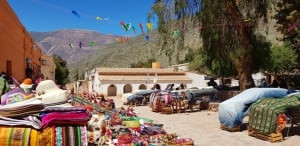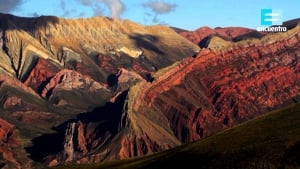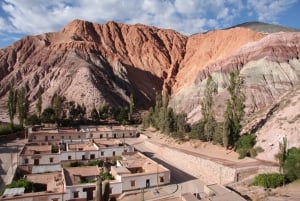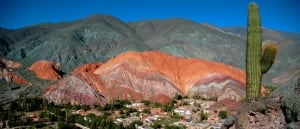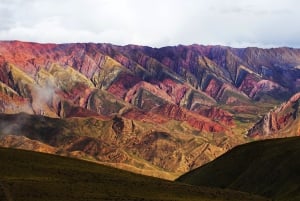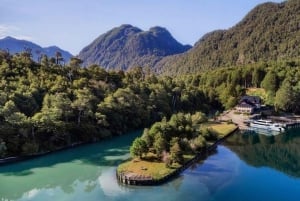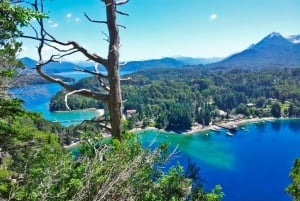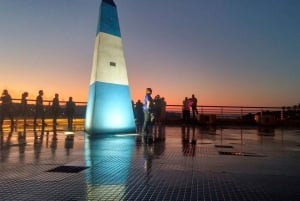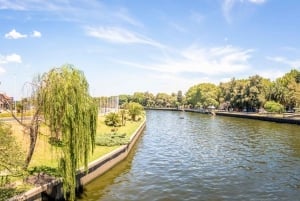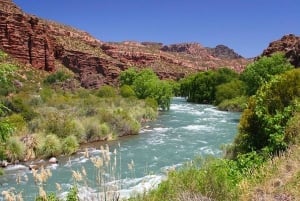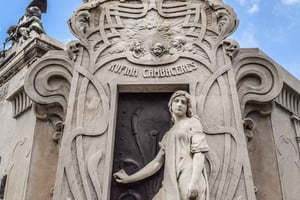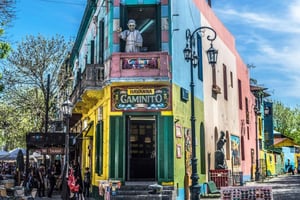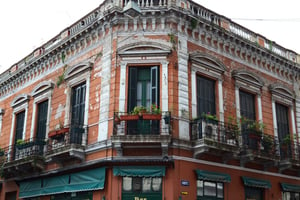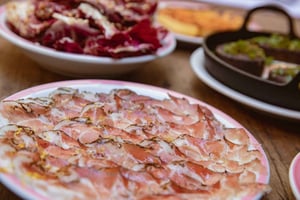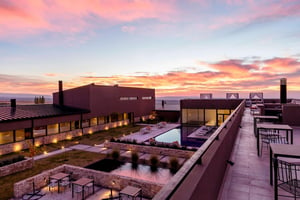Get to know Quebrada de Humahuaca: its history, places, and inhabitants
Book Top Experiences and Tours in Argentina:
If youʻre booking your trip to Argentina last minute, we have you covered. Below are some of the top tours and experiences!- Foz do Iguaçu: Wanda Mines and San Ignacio Ruins Day Trip
- Bariloche: Puerto Blest and Los Cantaros Waterfall
- From Buenos Aires: Colonia Ferry Tickets and Optional Tour
- Buenos Aires: Wine Tasting and Lunch at Bodega Gamboa
- Bariloche: 7 Lakes & San Martin de Los Andes Road Trip
La Quebrada starts 39 kilometers from San Salvador de Jujuy, on route 9, and covers some 170 kilometers of valleys and mountains arranged from south to north. The mountain ranges present different tonalities according to the minerals that make them up. This landscape is between 2000 and 4000 meters above sea level and has a 13-kilometer wide strip watered, in times of thaw, by the Rio Grande.

The Quebrada de Humahuaca combines a series of natural, cultural, and historical attractions, which makes the province very popular with tourists. It starts 39 kilometers from San Salvador de Jujuy, on route 9, and covers about 170 kilometers of valleys and mountains drawn from south to north. The mountain ranges present different tonalities according to the minerals that make them up. This landscape is between 2000 and 4000 meters above sea level, and has a 13-kilometer wide strip of land irrigated, in times of thaw, by the fresh and abundant Rio Grande.
Volcán is the first small town in the Quebrada, from San Salvador de Jujuy. Further on is Kumbaya, at 2094 meters above sea level, with its 18th-century chapel and spring where, according to legend, San Francisco Solano drank. The craft fair of Purmamarca, the national history museum built-in 1772 in Posta de Hornillos, and the carnivals of Maimará are other attractions of this place. In Tilcara, the aboriginal tradition is revived, with the presence of the Viltipoco fortress, the last chieftain of the Omaguaca tribe, who offered tenacious resistance to the Spanish colonization. In Huacalera, a monolith indicates the crossing of the Tropic of Capricorn and then the town of Humahuaca appears before the traveler's eyes, with its adobe houses, narrow, cobbled streets, and the church with its paintings from the school of Cuzco, Peru. Among its cultural attractions is the Pucará de Tilcara, a fortification that the aborigines built on the top of a mountain, from where you can see the valley and the access roads.



